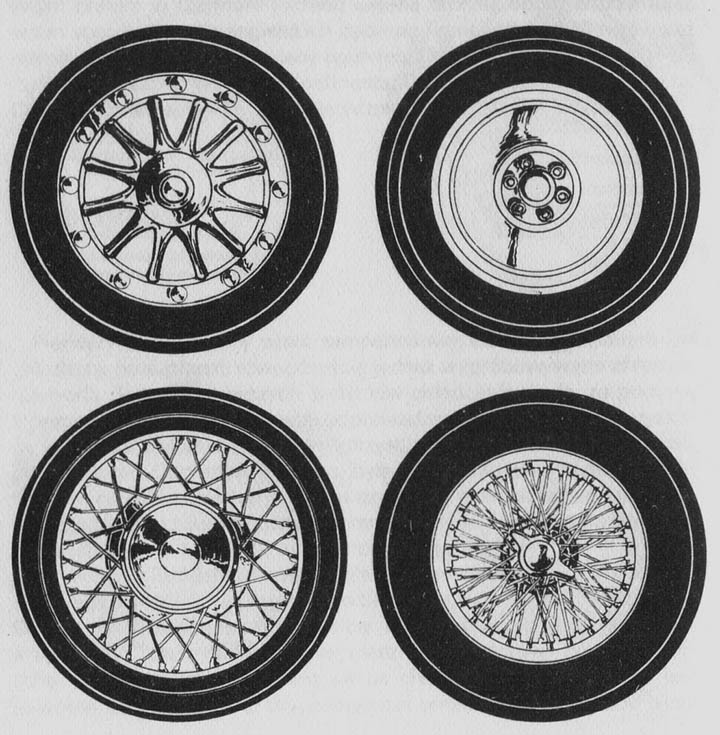Wheels on old cars.
The rattling steel wheels of the first motor vehicles were so hard and inelastic, that even the best suspension did not dampen the shocks. In this situation, the use of a solid rubber wheel was already a great advance. It absorbed small unevenness of the road, the bigger ones still had to be simply avoided.
The discovery of pneumatic tires was of great importance. W 1845r. the patent for them was filed by the Edinburgh merchant Robert William Thomson. This patent was forgotten, despite the fact that even carriages in Hyde Park rode on such tires.

W 1888 r. Scottish vet, dr John Boyd Dunlop, he coiled the rubber hose in a circle, he stuck the valve into the air and stuck such a tire on the wheels of his son's bicycle. A three-wheeled bicycle with inflated tires rode much lighter and left no ruts on the paths of the garden. A year later, Dr. Dunlop obtained a patent for his tire. Contrary to the obvious advantages of pneumatic tires, there were still a lot of problems with them. The tires did not stick to the rim, and when damaged it was difficult to change. Therefore, mainly the riders and their helpers dealt with the improvement of the tires, who most wanted to replace them quickly, if necessary.
In France, Eduard Michelin fitted Dunlop tires to the Peugeot brothers' motor vehicle and, with his brother, took part in the first Paris-Bordeaux-Paris car races. He invented and used removable rims in racing, bolted to the wheel disc. As it turned out, he had to do it during the races 65 change punctured tires, nevertheless, the advantages of its improved wheel have been proven. Michelin later established its own tire factory with its brother in Clermont-Ferrand, thus stopping the invasion of English tires into France. From 1873 r. the German car tire industry also began to develop. Continental Caoutschuk und Gutta-Percha Compagnie was founded at that time, and then the specialized companies Metzeler and Peter.